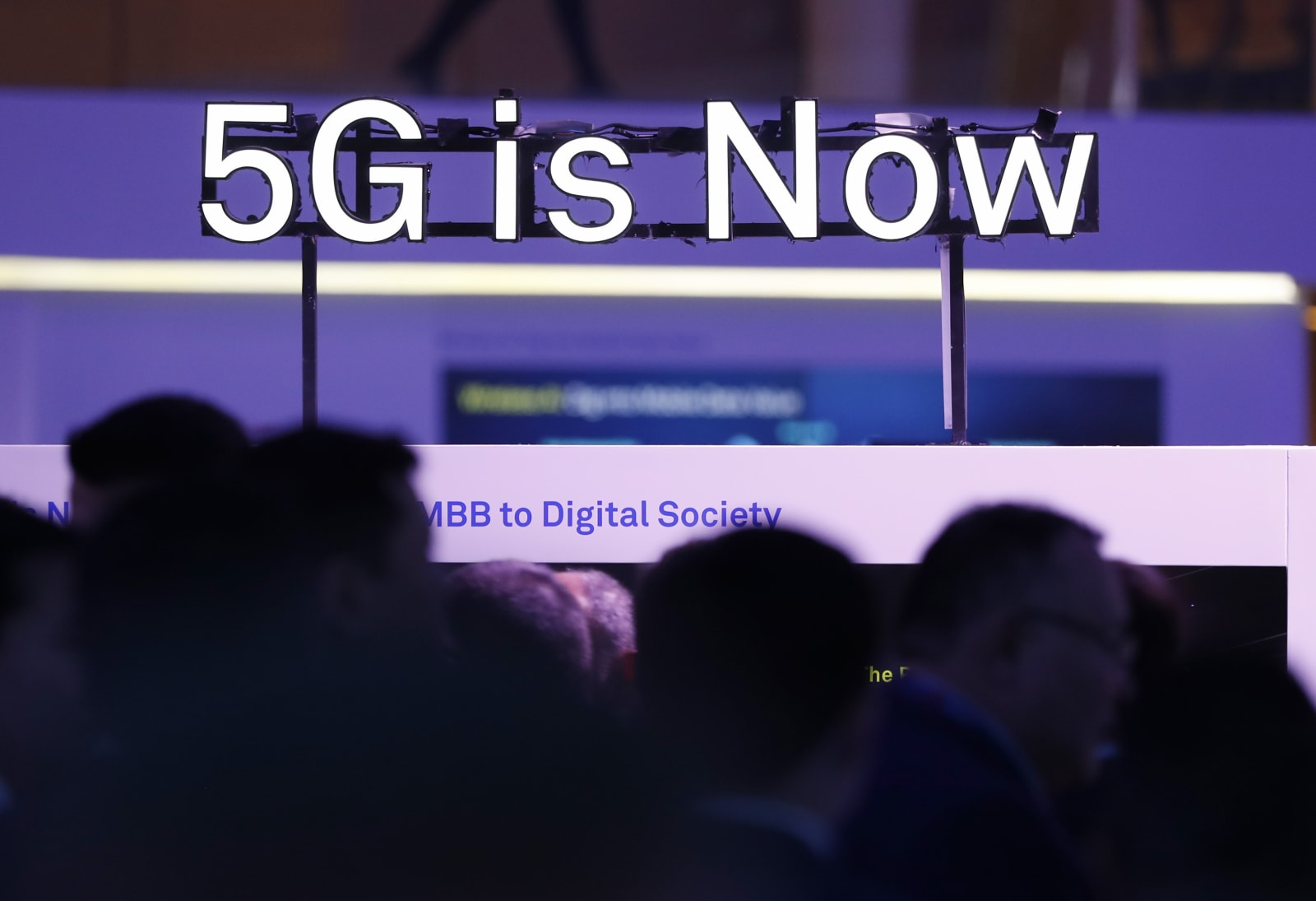MWC 2018 teased a 5G-powered world that’s so close to being real


Before packing my bags for Spain, I took stock of my inbox for MWC meeting requests. A quick search showed I had more than 100 emails about 5G. "Solutions for cloud-based 5G infrastructures," one read. "5G is happening," another proclaimed. "Meet with XX 5G exec?" "XX invites you to experience the new 5G era." From demos of super fast phones and connected street lights, to obscure infrastructure projects that will actually form the backbone of 5G, the thirst was real.
Cut to the first official day of the show, and it was almost impossible to avoid the in-your-face signs attempting to lure you to "5G open innovation" demos. Everywhere we turned, we were confronted with yet another banner. This isn't surprising of course, 5G is very much a mobile communications standard and we were in Barcelona for Mobile World Congress, after all.
This isn't the first time 5G news has permeated MWC -- in years past, we saw companies show off "the first 5G phone," even before the spec was approved. But at MWC 2018, we were seeing not just a few obvious proofs of concept, but a broad creative range of connected devices.

Intel, for example, had one of the most comprehensive sets of 5G applications on display. It showed off a 5G-capable PC concept, but it also showcased a 5G-connected car, as well as simulations of virtual cities. In those scenarios, devices like cars, traffic lights, drones and base stations communicate with each other to create a world that can basically think for itself. For example, cars packing 5G radios can allow passengers to conduct conference calls or watch Netflix at impressively high speeds while on the move. But a world with 5G everywhere could have gas pumps to automatically select the right type and amount of fuel for you and process the payment without having to leave the driver's seat.
Self-driving cars can warn each other of upcoming turns and slowdowns, as well as allow for a traffic management to pre-emptively re-route autonomous vehicles to avoid congestion. Of course, we didn't get to see that whole system in action just yet -- what was on display was a cute setup with toys carrying transmitters to simulate that futuristic world.
Intel also shared a virtual map of a theoretical city that's deeply integrated 5G into all sorts of devices. These ran the gamut from drones and weather sensors, to Bosch air quality monitors and General Electric's CityIQ street lamps that track pedestrian traffic and listen for gunshots. Many of these are actually already live in various cities, but for the sake of MWC, Intel plotted their data onto a map of Barcelona. The company showed how, in theory, this information could all be collected and used not just for easing congestion, but also to deliver things like Amber alerts through digital billboards.

Meanwhile, in a meeting room above its booth, Qualcomm secretly showed off a virtual reality headset that uses a blend of on-device and cloud-based graphics processing to push an impressively high-res immersive experience. The characters I saw, and the details on their costumes and surroundings, were extremely clear, to the point where I could see small stains on a person's jacket.
But more importantly, I was able to explore this detailed world without any noticeable delay caused by the cloud-based graphics processing, thanks to the 5G connection. During my demo with Qualcomm, I was also able to turn my head around freely. Even when the receiver on top of the headset was obstructed from view of the base station in the top right corner of the room, I was still receiving high-quality VR graphics with barely a flicker in the experience. This is noteworthy as millimeter waves, which are a key part of the new 5G spec, are notorious for being susceptible to signal interference.
This is just a demo, of course, but since it uses components that are already compliant with the new spec, it's a good indicator of what's possible when 5G rolls out.

Now that there is an industry standard, companies also rushed to show off products that would help network operators get connected. For example, Huawei unveiled a 5G customer-premises equipment (CPE) terminal -- like a signal repeater you can buy to access your service provider's 5G network in areas with spotty coverage.
Carriers like T-Mobile, Telefonica and Deutsche Telekom also announced plans to bring 5G to their customers, while somewhere in far-flung Hall 7, people were invited to control 5G-connected robot football players that were in a whole other part of the convention center.
We are inching ever closer towards 5G becoming a reality, and nowhere was the excitement about this development as palpable as it was at MWC 2018. Although the event was altogether a strangely quiet show, it's obvious 5G fever hasn't broken. I'm sure we'll hear more about how 5G can change our lives soon enough, but meanwhile I still have to wait 30 minutes to download all the podcasts I need for my 9-hour flight home. Thanks a lot, 4G.
Catch up on the latest news from MWC 2018 right here.
via Engadget RSS Feed "http://ift.tt/2FgeF3w"
Comments
Post a Comment